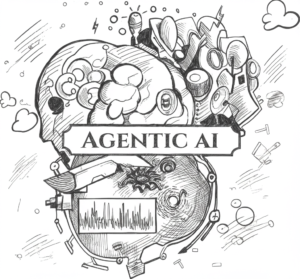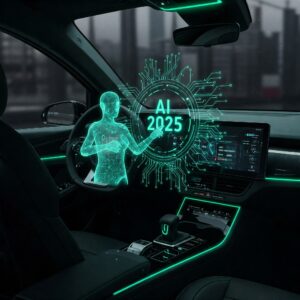Artificial Intelligence: A Comprehensive Overview
Artificial Intelligence: A Comprehensive Overview
Introduction to Artificial Intelligence
Artificial Intelligence (AI) refers to the simulation of human intelligence in machines that are programmed to think like humans and mimic their actions. The term may also be applied to any machine that exhibits traits associated with a human mind such as learning and problem-solving. The core concepts of AI include machine learning, where computers are trained to learn from data, and neural networks, which are systems designed to recognize patterns.
The historical evolution of AI dates back to the mid-20th century, with the term ‘Artificial Intelligence’ first coined by John McCarthy in 1956 at the Dartmouth Conference. This event is considered the birth of AI as a field. Milestones in AI’s development include the creation of the first AI program, the Logic Theorist, by Allen Newell and Herbert A. Simon in 1955, and the development of the first chatbot, ELIZA, by Joseph Weizenbaum in 1966. The field has since evolved through various phases, from the optimism of the early years to the challenges of the ‘AI winter’ periods, leading to the current era of rapid advancements and widespread application.
The Science Behind AI
Machine Learning
Machine learning, a cornerstone of artificial intelligence (AI), is broadly categorized into three types: supervised, unsupervised, and reinforcement learning. Supervised learning involves training a model on a labeled dataset, where the correct answers are provided. Common algorithms include linear regression for continuous outcomes and logistic regression for binary classification. Unsupervised learning, on the other hand, deals with unlabeled data, seeking to identify patterns or groupings within it, with clustering algorithms like K-means being a prime example. Reinforcement learning is about taking suitable actions to maximize reward in a particular situation, with algorithms such as Q-learning playing a pivotal role.
Key models in machine learning encompass decision trees, support vector machines (SVMs), and ensemble methods like random forests and gradient boosting machines (GBMs). These models are instrumental in solving a wide array of problems, from predicting customer behavior to automating decision-making processes.
Deep Learning
Deep learning, a subset of machine learning, utilizes neural networks with many layers (hence ‘deep’) to model complex patterns in data. Neural networks are inspired by the human brain’s structure and function, consisting of interconnected nodes or neurons. Architectures vary widely, from simple feedforward networks to more complex structures like convolutional neural networks (CNNs) for image recognition and recurrent neural networks (RNNs) for sequential data such as speech or text.
Applications of deep learning are vast and transformative, particularly in image and speech recognition. CNNs, for example, have revolutionized the field of computer vision, enabling machines to identify and classify objects within images with remarkable accuracy. Similarly, RNNs and their variants, such as long short-term memory (LSTM) networks, have significantly improved machines’ ability to understand and generate human speech, powering virtual assistants and real-time translation services.
Applications of AI Across Industries
Healthcare
AI is revolutionizing healthcare by enhancing diagnosis and treatment recommendations. Through machine learning algorithms, AI systems can analyze vast amounts of medical data to identify patterns and suggest diagnoses with high accuracy. Additionally, AI plays a pivotal role in drug discovery and development, significantly reducing the time and cost associated with bringing new medications to market.
Finance
In the finance sector, AI is instrumental in fraud detection and prevention. By analyzing transaction patterns, AI can identify anomalies that may indicate fraudulent activity, thereby safeguarding assets. Furthermore, AI-driven algorithmic trading uses complex algorithms to execute trades at the best possible prices, optimizing investment strategies.
Automotive
The automotive industry benefits from AI through the development of autonomous vehicles, which rely on AI for navigation and decision-making in real-time. AI also enhances safety and navigation systems, making driving safer by predicting potential hazards and assisting in accident prevention.
Ethical Considerations and Challenges
Bias and Fairness in AI Algorithms
Artificial Intelligence systems are only as unbiased as the data they are trained on. Historical data can contain implicit biases, which, if not carefully addressed, can lead to AI systems perpetuating or even exacerbating these biases. Ensuring fairness in AI algorithms requires continuous monitoring and the implementation of fairness-aware algorithms during the development phase.
Privacy Concerns and Data Security
With AI’s ability to process vast amounts of personal data comes significant privacy concerns. The risk of data breaches and unauthorized access to sensitive information is a pressing challenge. Implementing robust data encryption and strict access controls are essential steps in safeguarding user privacy in AI applications.
The Future of Employment and AI
The rise of AI technologies has sparked debates about the future of employment. While AI can automate repetitive tasks, leading to job displacement in certain sectors, it also creates opportunities for new kinds of jobs that require human creativity and emotional intelligence. Balancing the benefits of AI with the need to support workforce transitions is a critical ethical consideration.
The Future of Artificial Intelligence
Emerging trends and technologies
The landscape of Artificial Intelligence (AI) is rapidly evolving, with several key trends and technologies shaping its future. Among these, machine learning advancements continue to push the boundaries of what AI can achieve, enabling more sophisticated data analysis and decision-making processes. Quantum computing is another frontier, promising to exponentially increase the processing power available for AI applications. Additionally, the rise of AI ethics and governance frameworks highlights the growing recognition of the need to guide AI development responsibly. Innovations in natural language processing (NLP) and computer vision are making AI more accessible and useful in everyday applications, from virtual assistants to autonomous vehicles.
Potential impacts on society and the economy
The integration of AI into various sectors is poised to have profound effects on society and the economy. On the positive side, AI can drive efficiency and productivity, automating routine tasks and enabling humans to focus on creative and strategic endeavors. However, this shift also raises concerns about job displacement and the need for workforce retraining. The economic implications are vast, with AI expected to contribute significantly to GDP growth in the coming decades. Socially, AI has the potential to improve quality of life through advancements in healthcare, education, and environmental sustainability. Yet, challenges such as data privacy, algorithmic bias, and digital divide must be addressed to ensure equitable benefits. As AI continues to advance, its role in shaping the future of work, governance, and human interaction will undoubtedly be a topic of ongoing debate and innovation.
Citations
- The Role of AI in Modern Healthcare – AI is revolutionizing patient care and medical research.
- AI and the Future of Work – Automation may displace jobs but also create new opportunities.
- Ethical AI: Challenges and Solutions – Addressing bias and ensuring fairness in AI systems is crucial for their acceptance and effectiveness.
Conclusion
Summary of Key Points
Artificial Intelligence (AI) has rapidly evolved from a theoretical concept to a foundational technology that influences various sectors including healthcare, finance, and education. Key advancements in machine learning, natural language processing, and robotics have enabled AI systems to perform complex tasks with increasing autonomy and efficiency. However, challenges such as ethical concerns, data privacy issues, and the potential for job displacement remain significant hurdles.
Final Thoughts on the Trajectory of AI Development
The trajectory of AI development suggests a future where AI becomes even more integrated into daily life and business operations. As technology advances, the focus must shift towards creating ethical frameworks and policies that ensure AI benefits society as a whole. The potential for AI to solve some of the world’s most pressing problems is immense, but realizing this potential requires careful consideration of the technology’s impact on humanity.








